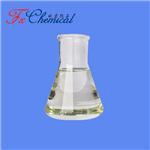
Citronellal
- Product NameCitronellal
- CAS106-23-0
- CBNumberCB3715673
- MFC10H18O
- MW154.25
- EINECS203-376-6
- MDL NumberMFCD00038090
- MOL File106-23-0.mol
- MSDS FileSDS
Chemical Properties
| Melting point | -16°C (estimate) |
| alpha | D25 +11.50° |
| Boiling point | 207 °C(lit.) |
| Density | 0.857 g/mL at 25 °C(lit.) |
| vapor pressure | 14 hPa (88 °C) |
| FEMA | 2307 | CITRONELLAL |
| refractive index | n |
| Flash point | 169 °F |
| storage temp. | Store below +30°C. |
| solubility | Chloroform (Soluble), Methanol (Sparingly) |
| form | Liquid |
| Specific Gravity | 0.858 (20/4℃) |
| color | Clear light yellow |
| PH | 7 (H2O) |
| Odor | at 10.00 % in dipropylene glycol. sweet dry floral herbal waxy aldehydic citrus |
| Odor Type | floral |
| biological source | synthetic |
| Viscosity | 1.82mm2/s |
Safety
| Symbol(GHS) |

|
|||||||||
| Signal word | Warning | |||||||||
| Hazard statements | H315-H317-H319 | |||||||||
| Precautionary statements | P261-P264-P272-P280-P302+P352-P305+P351+P338 | |||||||||
| Hazard Codes | Xn,Xi,N | |||||||||
| Risk Statements | 38-43-51/53-36/37/38-22 | |||||||||
| Safety Statements | 36/37-61-37/39-26-36 | |||||||||
| RIDADR | UN 3082 9/PG 3 | |||||||||
| WGK Germany | 3 | |||||||||
| RTECS | RH2140000 | |||||||||
| F | 8 | |||||||||
| Autoignition Temperature | 202 °C | |||||||||
| TSCA | Yes | |||||||||
| HS Code | 29121900 | |||||||||
| Hazardous Substances Data | 106-23-0(Hazardous Substances Data) | |||||||||
| Toxicity | LD50 orally in Rabbit: 2420 mg/kg LD50 dermal Rabbit > 2500 mg/kg | |||||||||
| NFPA 704: |
|


